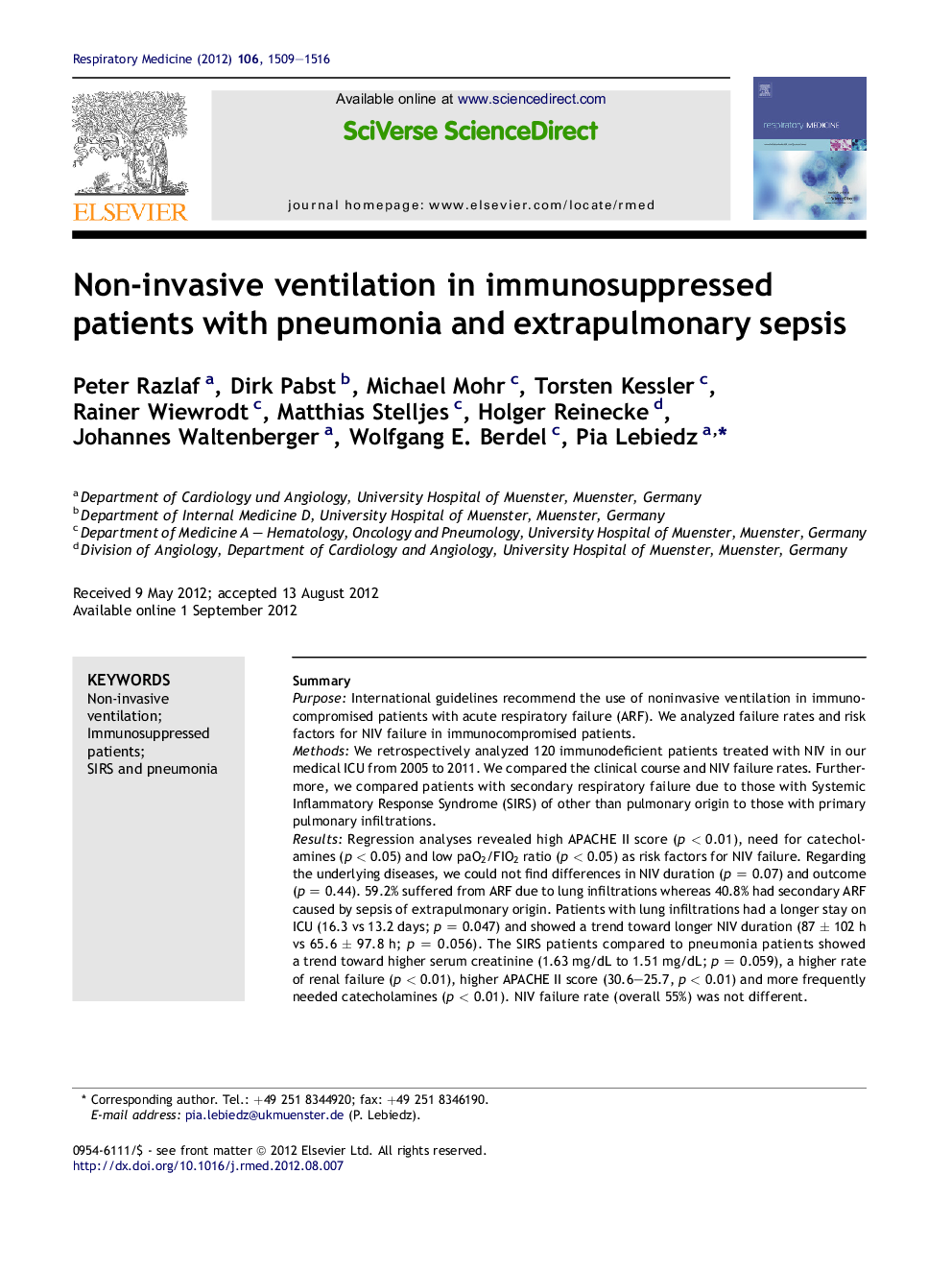| Article ID | Journal | Published Year | Pages | File Type |
|---|---|---|---|---|
| 4210380 | Respiratory Medicine | 2012 | 8 Pages |
SummaryPurposeInternational guidelines recommend the use of noninvasive ventilation in immunocompromised patients with acute respiratory failure (ARF). We analyzed failure rates and risk factors for NIV failure in immunocompromised patients.MethodsWe retrospectively analyzed 120 immunodeficient patients treated with NIV in our medical ICU from 2005 to 2011. We compared the clinical course and NIV failure rates. Furthermore, we compared patients with secondary respiratory failure due to those with Systemic Inflammatory Response Syndrome (SIRS) of other than pulmonary origin to those with primary pulmonary infiltrations.ResultsRegression analyses revealed high APACHE II score (p < 0.01), need for catecholamines (p < 0.05) and low paO2/FIO2 ratio (p < 0.05) as risk factors for NIV failure. Regarding the underlying diseases, we could not find differences in NIV duration (p = 0.07) and outcome (p = 0.44). 59.2% suffered from ARF due to lung infiltrations whereas 40.8% had secondary ARF caused by sepsis of extrapulmonary origin. Patients with lung infiltrations had a longer stay on ICU (16.3 vs 13.2 days; p = 0.047) and showed a trend toward longer NIV duration (87 ± 102 h vs 65.6 ± 97.8 h; p = 0.056). The SIRS patients compared to pneumonia patients showed a trend toward higher serum creatinine (1.63 mg/dL to 1.51 mg/dL; p = 0.059), a higher rate of renal failure (p < 0.01), higher APACHE II score (30.6–25.7, p < 0.01) and more frequently needed catecholamines (p < 0.01). NIV failure rate (overall 55%) was not different.ConclusionsAlmost 50% of the immunocompromised patients treated with NIV did not require intubation independent of the etiology of ARF. High APACHE II scores and severity of oxygenation failure were associated with NIV failure.
